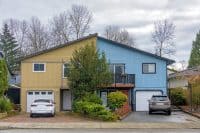
The national mortgage application fraud risk index rose from 138 in the fourth quarter of 2017 to 144 in the first quarter of 2018, according to researchers at CoreLogic. In the first quarter of 2017, the index reading was 132. The fraud risk index has risen in the past six consecutive quarters.
CoreLogic’s mortgage fraud risk index is calculated from the aggregation of individual loan application fraud risk scores during the prior quarter. Score compilations are calculated for the 100 most populated U.S. Census Bureau Core Based Statistical Areas in the United States.
Purchase applications for new mortgages rose by four percentage points sequentially to 62%. Applications for new mortgages are riskier for lenders than applications for refinancing. Applications for refinancing were down in the quarter, which helped boost the overall index score.
The share of loans originated through wholesale channels has been rising for the past five quarters. It rose 40% year over year to an index of 9.0% in the first quarter, up from 8.4% at the end of the fourth quarter of 2017.
CoreLogic also noted more frequent reporting of inflated income characteristics, including relatively high incomes from small employers and incomes that are inconsistent with residence histories.
More borrowers are also misrepresenting the type of loans they are requesting. The incidence of borrowers seeking loans for owner-occupancy when in fact they are acquiring a rental property is also increasing lender risk. Interest rates are typically lower for owner-occupants. CoreLogic noted that this is a particular issue in the Wichita area, where fraud risk rose by 46% sequentially.
The 15 metro areas with the highest mortgage fraud risk and the quarter-over-quarter change are:
- Wichita, Kansas: 330, up 46%
- Miami-Fort Lauderdale-West Palm Beach, Florida: 280, up 11%
- New York-Newark-Jersey City, New York/New Jersey: 261, up 7%
- Springfield, Massachusetts: 258, up 4%
- Oklahoma City, Oklahoma: 254, up 41%
- Albuquerque, New Mexico: 247, up 37%
- Buffalo-Cheektowaga-Niagara Falls, New York: 231, up 20%
- El Paso, Texas: 224, up 17%
- Memphis, Tennessee/Mississippi/Arkansas: 222, up 2%
- Urban Honolulu, Hawaii: 209, up 33%
- Tampa-St. Petersburg-Clearwater, Florida: 207, up 7%
- Los Angeles-Long Beach-Anaheim, California: 207, up 7%
- Augusta, Richmond County, Georgia/South Carolina: 205, up 7%
- Rochester, New York: 199, up 29%
- Deltona-Daytona Beach-Ormond, Florida: 196, down 9%
Mortgage fraud can take many forms. The basic motive behind most of the borrower-initiated fraud is an attempt to qualify for a mortgage that would otherwise be unavailable. Inflating an appraisal in an attempt to get a mortgage for more than a property is worth or claiming income or assets that a borrower does not have are just two examples.
Borrowers themselves also may be the target of scams seeking to defraud them with loan modification programs or even Ponzi schemes. Promise to rescue a borrower from a foreclosure can leave a beleaguered homeowner in even worse financial shape.
Visit the CoreLogic website for more information and for the methodology the firm uses to derive its Mortgage Fraud Index.
The Average American Has No Idea How Much Money You Can Make Today (Sponsor)
The last few years made people forget how much banks and CD’s can pay. Meanwhile, interest rates have spiked and many can afford to pay you much more, but most are keeping yields low and hoping you won’t notice.
But there is good news. To win qualified customers, some accounts are paying almost 10x the national average! That’s an incredible way to keep your money safe and earn more at the same time. Our top pick for high yield savings accounts includes other benefits as well. You can earn up to 3.80% with a Checking & Savings Account today Sign up and get up to $300 with direct deposit. No account fees. FDIC Insured.
Click here to see how much more you could be earning on your savings today. It takes just a few minutes to open an account to make your money work for you.
Our top pick for high yield savings accounts includes other benefits as well. You can earn up to 4.00% with a Checking & Savings Account from Sofi. Sign up and get up to $300 with direct deposit. No account fees. FDIC Insured.
Thank you for reading! Have some feedback for us?
Contact the 24/7 Wall St. editorial team.


